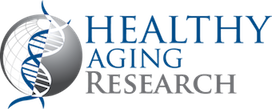
Healthy Aging Research
Open Access
ISSN: 2261-7434
+44-77-2385-9429

ISSN: 2261-7434
+44-77-2385-9429
Commentary - (2022)Volume 11, Issue 2
Senescence, often known as biological aging, is the slow loss of a living organism's functional qualities. The term "senescence" can be used to describe both cellular senescence and organismal senescence. At least in the later stages of an organism's life cycle, senescence occurs when mortality rates raise with age and/or fertility declines.
Definition and characteristics
Senescence in organisms refers to their overall aging. A rise in mortality and/or a decline in fecundity with age are two characteristics of actuarial senescence. The age-dependent portion of the death rate is said to increase exponentially with age, according to the Gompertz-Makeham law of mortality.
The ability to respond to stress declines with age, homeostasis becomes more unbalanced, and the risk of aging-related disorders including cancer and heart disease rises. A steady decline in physiological function, an intrinsic age-related process of viability loss, and an increase in vulnerability are all considered to be signs of aging.
Scientists have identified nine characteristics of aging that are shared by all creatures, with a focus on mammals:
• Genomic instability
• Telomere attrition
• Epigenetic alterations
• Loss of proteostasis
• Deregulated nutrient sensing
• Mitochondrial dysfunction
• Cellular senescence
• Stem cell exhaustion
• Altered intercellular communication
The environment causes harm on many different levels, including DNA damage and oxygen radical damage to tissues and cells. Some of this damage is not healed and builds up over time. Cloning using somatic cells as opposed to germ cells might carry more damage at birth.
The sheep named Dolly passed away at an early age from a communicable lung ailment, but statistics on the death and aging of the entire cloned population would be required to calculate mortality rates and aging.
Biomarkers of aging
Biomarkers may be able to predict fertility, mortality, and functional ability more accurately than chronological age if different people mature at different rates. Contrary to popular belief, chronological age is not a stronger predictor of future functionality than hair greying, wrinkles, or other aging-related changes to the skin. The search for and validation of agingrelated biomarkers has persisted, but progress has been patchy. The lifetime of middle-aged mice has been accurately predicted by looking at the concentrations of CD4 and CD8 memory T cells as well as naive T cells.
The capacity of an epigenetic clock to predict human chronological age has generated interest in it as a biomarker of aging. Cell counts and fundamental blood biochemistry can also be utilized to precisely predict chronological age. With the use of the transcriptome aging clocks, it is also possible to estimate human chronological age.
Genetic determinants of aging
Several genetic elements of aging have been discovered using model organisms, ranging from fruit flies and worms like Caenorhabditis elegans to the straightforward budding yeast Saccharomyces cerevisiae. These creatures have at least two conserved aging processes, according to research.
A study of such genes in yeast suggests that because gene expression is inadequately regulated, it is feasible that random variations in the expression levels of numerous genes contribute to the aging process.
Despite having identical genes, individual cells can respond to external stimuli quite differently and have very diverse lifespans, which suggests that epigenetic factors as well as hereditary factors play a significant role in gene expression and aging. In both mice and humans, the capacity to repair DNA double-strand breaks decreases with age.
Citation: Yeo JK (2022) Senescence and Genetic Factors that Influence Aging. Healthy Aging Research.11:141
Received: 01-Jul-2022, Manuscript No. HAR-22-21440; Editor assigned: 04-Jul-2022, Pre QC No. HAR-22-21440 (PQ); Reviewed: 18-Jul-2022, QC No. HAR-22-21440; Revised: 25-Jul-2022, Manuscript No. HAR-22-21440 (R); Published: 01-Aug-2022 , DOI: 10.35248/2261-7434.22.11.141
Copyright: © 2022 Yeo JK. This is an open-access article distributed under the terms of the Creative Commons Attribution License, which permits unrestricted use, distribution, and reproduction in any medium, provided the original author and source are credited.